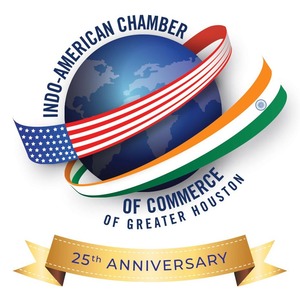High-Skill Immigration at a Crossroads: Emily Neumann Warns $100,000 H-1B Fee Could Drive Talent Away
By Somdatta Basu
The IACCGH Business Hour became an urgent civics lesson on the economics of talent when Emily Neumann, attorney at Reddy Neumann Brown PC, explained what the administration’s new $100,000 H-1B filing fee could mean for universities, research institutions, and employers that depend on high-skill workers. A veteran of “23 years” in business immigration, Neumann set the stakes plainly: “Artificial Intelligence. If we don’t do it now, other countries are going to do it… and we’re going to be left behind.”
Specializing “solely on business immigration… for businesses and employees and their family members,” she separated signal from noise. The policy’s language and FAQs “don’t really match up,” she warned, but the real-world impact is already clear: cap-exempt employers – universities, nonprofit affiliates, and research organizations – face the steepest shock when hiring first-time H-1B talent abroad. “We’re talking about professors, researchers, healthcare workers,” she said, adding that she had “yet to talk to any employer who’s willing to pay that amount.” The $100,000 fee, she clarified, is a one-time charge at petition filing (after lottery selection), not an annual payment.
The rule also allows for exemptions – for a worker, employer, or industry – but “they’ve not come out with any of these exemptions yet,” she noted. USCIS is expected to decide eligibility once procedures are issued. In parallel, a lawsuit challenging the President’s authority to impose the fee argues that only Congress can set immigration charges. If the court grants an injunction, she said, “it’s very possible the whole thing might be blocked by the time the next lottery rolls around.”
For cap-subject employers, Neumann outlined steps to prepare for the 2026 H-1B season should the rule stand: focus on candidates already in the U.S., file as changes of status to avoid the entry-based fee, and track exemption updates. Petitions filed before September 21 remain unaffected, including those now in visa stamping. But for extensions filed after that date, she said she has asked USCIS to clarify what happens if a worker travels abroad – “guidance is still pending.”
She also explained how the 85,000 annual H-1B cap still applies to cap-subject employers, while universities and affiliated nonprofits remain exempt. Ironically, those same institutions now face the highest new costs. “Outside of the giant ones, for maybe one or two top, highly necessary employees, most companies are looking to hire talent where it already is,” she said. If the fee stays, “the jobs will move to where the people are.”
Neumann then turned to the so-called “U.S. Gold Card” program. While early rumors suggested a million-dollar shortcut to permanent residency, she clarified that it’s essentially a rebrand of existing EB-1A and EB-2 National Interest Waiver categories. “They take your ability to gift the government a million dollars as proof that you have extraordinary ability in business or that you’re in the national interest,” she said. For Indians in decades-long backlogs, it offers little relief: “Who is going to pay a million dollars to maybe get a green card in a hundred years?”
On the student front, Neumann flagged potential F-1 reforms that could tighten long-standing norms. Instead of the current “duration of status,” proposed rules would set fixed end dates tied to the academic program and require new filings for OPT and STEM OPT. Another change could end the workaround of enrolling in a second degree to maintain status while re-entering the H-1B lottery – “That will be cut off completely,” she said, with ripple effects from study to work.
Asked about enforcement and adjudication, she noted increased biometrics notices for H-1B extensions since 2020 but “no major shifts” in RFE trends. She also cited her firm’s impact litigation that secured bundling of H-1B, H-4, and H-4 EAD adjudications and work authorization for L-2 spouses, reducing costly employment gaps.
Throughout the conversation, the business case for high-skill immigration remained central. Jagdip Ahluwalia, IACCGH’s Founding Secretary and Executive Director, thanked Neumann for volunteering her time and underscored the Chamber’s role in demystifying policy for local businesses. Employers echoed a common refrain: they’d “much rather hire an American if they could” because it’s simpler – but the talent shortage leaves few choices. As Neumann put it, “We’re shooting ourselves in the foot” with policies that deter the very innovators the economy needs.
The session ended where it began – on planning, not panic. Companies should map H-1B pipelines early, prioritize domestic candidates, and monitor exemption procedures and litigation. Workers and students should seek legal advice rather than rely on headlines. Neumann shared RN Law Group’s contact (713-953-7787; rnlawgroup.com) and reminded listeners that her team publishes weekly updates and live Q&As to track evolving rules.
No one pretended immigration was simple – or apolitical. But the takeaway was clear. “We depend a lot on global talent in America to fuel our innovation,” a caller said. As Ahluwalia added from Houston’s business frontlines, companies go abroad “for the talent.” Whether the U.S. continues to welcome that talent – or drives it elsewhere – will determine who builds the future.
